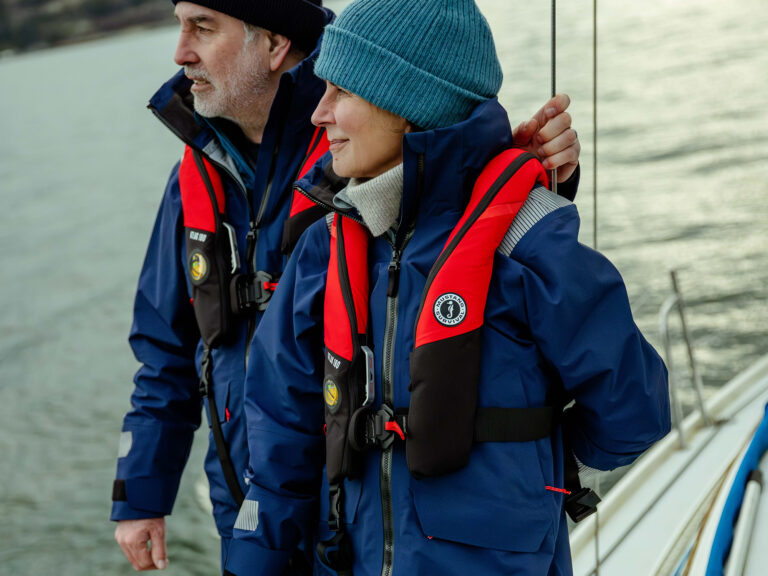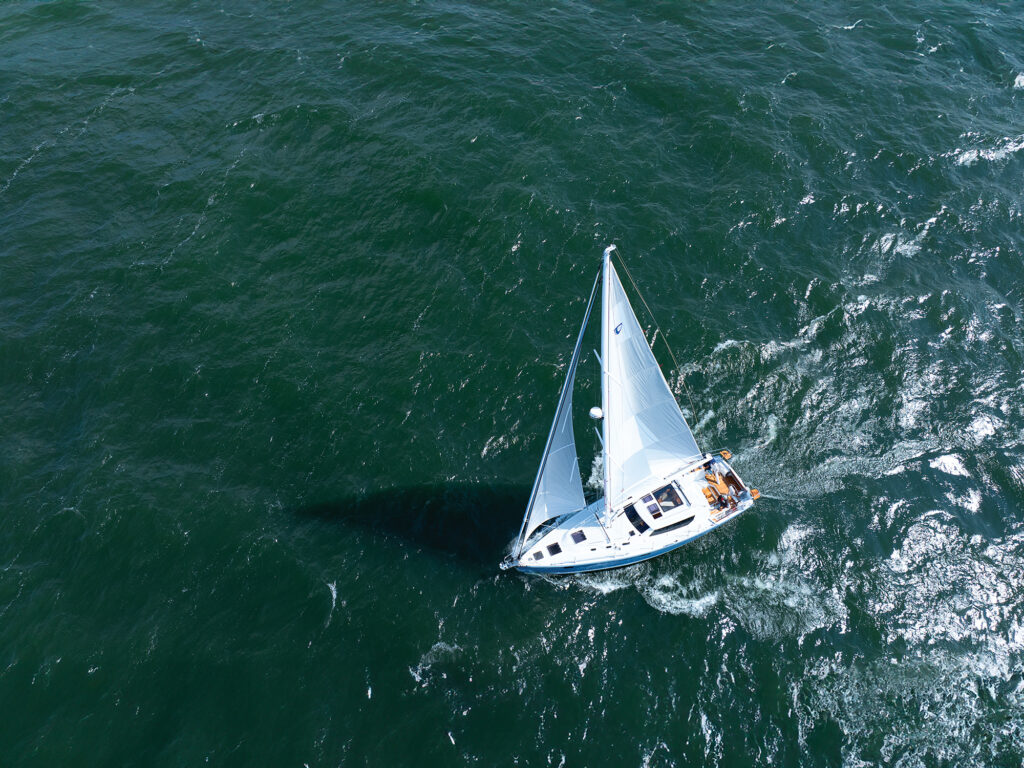
For me, for many reasons, certain boats and brands are synonymous with the waters or regions where they were created. The places are an essential component of the boats’ DNA. I’ll always associate a varnished mahogany runabout with upstate New York, or a cool little vintage catboat with Buzzards Bay and southern New England. Every classic Hinckley or Morris that I come across paints a vivid portrait of coastal Maine. Even yachts that sail or cruise far and wide all over the world still convey a sense of place. Recently, aboard a new Tartan 455, we pointed the bow into choppy Lake Erie, and I intuited an instant connection to the nearby northeast Ohio plant where the boat was spawned. It all felt like home.
Other people see different things. After I uploaded a photo to social media of myself steering the 455, an old pal quickly hit me back with a comment, asking: “Tartan is still building boats?”
The answer is an emphatic yes, and pretty darn good ones at that. The company has certainly had its ups and downs over the years, but it’s now navigating smoother waters for a couple of major reasons. First, it was recently acquired by Seattle Yachts, which made significant investments in the product and facilities, and appears firmly committed for the long haul. Second, longtime Tartan designer Tim Jackett is running operations, and the native Ohio homeboy is giving it his all.
Jackett says that the 455 evolved from powerboats by Legacy, a company Tartan acquired in 2010. “The roots of it came after having some exposure to the Legacy brand and looking at how the deck and interior of that sedan style of powerboat works out so nicely,” he says. His first swing at the design in sailboat mode was a 37-foot motorsailer with a substantial trim tab that powered up at 14 knots. (It was never built.) When the owner of a Tartan 3700 approached him about commissioning a larger boat, Jackett returned to expand upon his earlier incarnation.
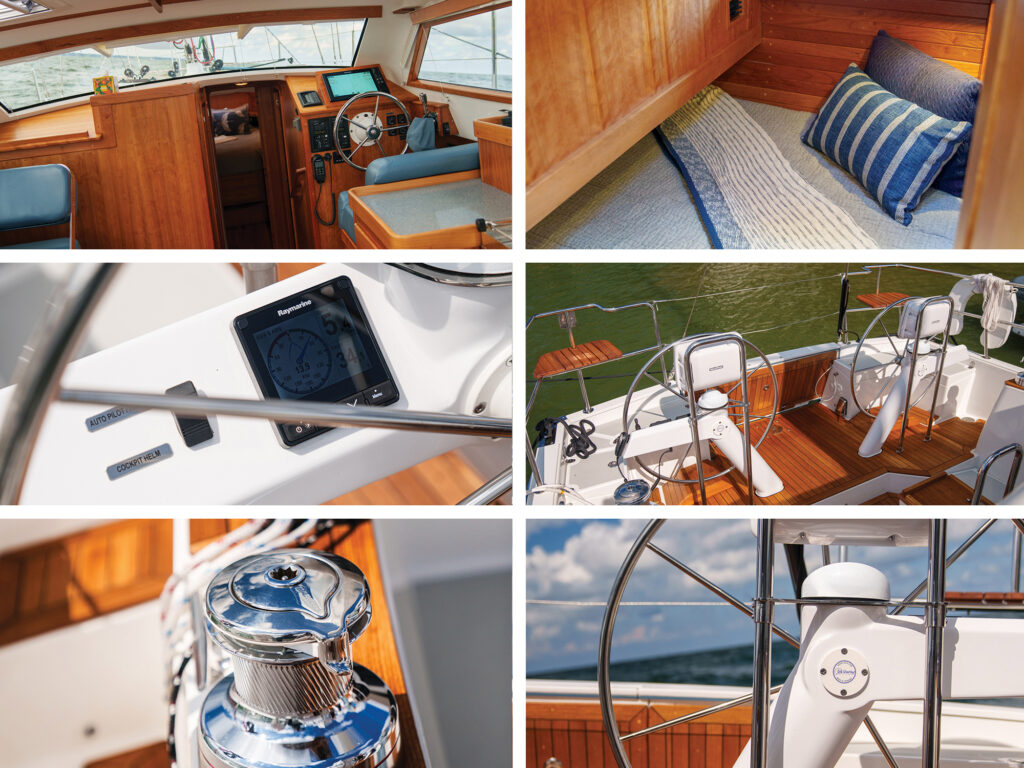
“But the concept was the same,” he says. “More of a sailing hull, but a nice, big, well-lit living space with inside steering, and then an aft cockpit that gave you the normal sailing experience of wind and water in your face when you wanted it.”
Jackett says that the 455 evolved from powerboats by legacy, a company tartan acquired in 2010. His first swing at the design was a 37-foot motorsailer.
Down a few steps into the deep cockpit, sliding doors open into the salon, which transitions into the forward living areas. The bulletproof laminate is a vacuum-bagged, infused sandwich that employs epoxy resin with a foam core in the hull construction and end-grain balsa in the deck. The lead keel supports a hefty ballast bulb and is available in deep- and shallow-draft configurations.
There are a couple of accommodations plans, including a two-stateroom version or the three-stateroom layout employed in the model we sailed, with guest staterooms to port and starboard, and an owner’s space forward with an attached head. The well-executed joiner work and furniture were cherry, though teak and maple are available (much of it sourced from northeast Ohio’s Amish mills). I’d say that this is primarily a comfortable couple’s boat with space for occasional visits from family and friends.
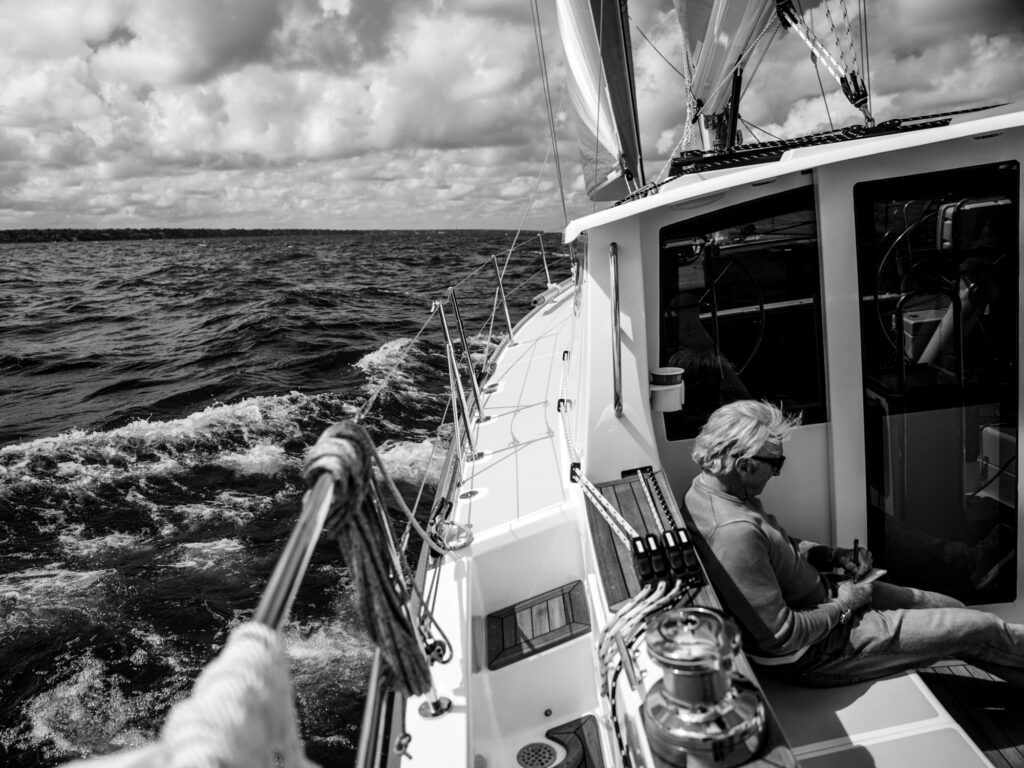
Aesthetically, I found the lines plan of the 455 to be handsome and pleasing—not a particularly easy task with a large deckhouse, which Jackett incorporated nicely into the profile.
This is primarily a comfortable couple’s boat with space for occasional visits from family and friends—A big boat but an easy one to negotiate.
Wraparound windows allow light to pour in from all directions, as does the deckhouse’s overhead window. A split hydraulic backstay provides easy access to the drop-down transom and boarding platform between the twin wheels, which are stationed well outboard. (There’s a single, deep spade rudder.) Moving forward, an outboard ramp rises from the cockpit to the side decks, which makes for easy egress to the topside and foredeck. I believe that this feature originated with the Jeanneau line, and I always thought it was a trend that would spill over to other builders (see the Moody 41DS). It’s just too simple and elegant a solution to an age-old design conundrum. There are grippy stainless-steel handrails just about everywhere. This Tartan is a big boat but an easy one to negotiate.
The carbon-fiber double-spreader rig is fashioned in Tartan’s in-house autoclave, as are the rudder post and other reinforcements. The company’s Cruise Control Rig double-headsail sail plan (also known as a Solent setup) has become a fixture across the brand, with a code-zero-style reacher on the forward stay and a smaller, self-tacking jib on the aft one. The powerful, full-battened mainsail is stashed in a Leisure Furl in-boom furler, and there’s a wide traveler atop the deckhouse that facilitates the end-boom mainsail sheeting. All the running rigging is led into the cockpit and handled by a combination of rope clutches and Harken electric winches. The excellent sails come from Sobstad’s loft in nearby Rocky Hill.
Over the years, I’ve sailed many a Jackett design, and the common denominator is they sail exceedingly well. We sailed the 455 on an early-fall afternoon after a cold front rolled through, offering up ideal 10- to 15-knot northwest breezes. The waves in the relatively shallow lake were closely spaced. As I took the wheel and came onto the wind under the smaller jib, it took me a while to stop pinching and get in the groove. But once I fell off a good 10 degrees, the boat and I settled in, and it muscled through the chop with aplomb.
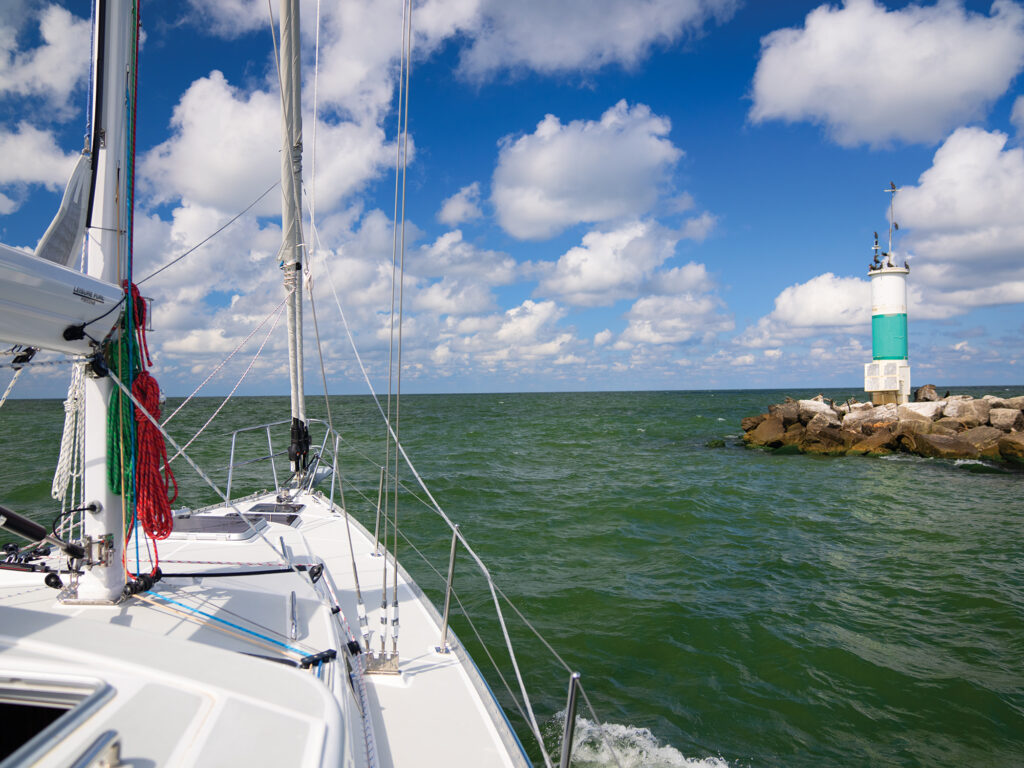
The steering was tight and accurate. Jackett says that he was still playing with the optimal rudder configuration, but it all felt fine to me. Topside, the Jefa wheels are cable-controlled, while the deckhouse steering station is on a hydraulic ram. You toggle between the two, depending on where you’re driving. We swapped out the self-tacker for the large reacher and bore off another 10 degrees, and the boat absolutely lit up, trucking along on a beam reach at bursts over 9 knots in complete and utter control. We even jibed the big sail through the exceedingly tight foretriangle, a maneuver I wouldn’t have thought possible. It was quite the sail.
Fittingly, the first Tartan 455 is going to live on the Great Lakes, with Lake Huron’s North Channel a likely regular cruising ground. But I can envision this being a terrific yacht for the Pacific Northwest and beyond, and ideal for high-latitude adventures. You might not be able to take the Ohio out of a Tartan, but you can take this Tartan just about anywhere.
Where It All Began: Tartan 27
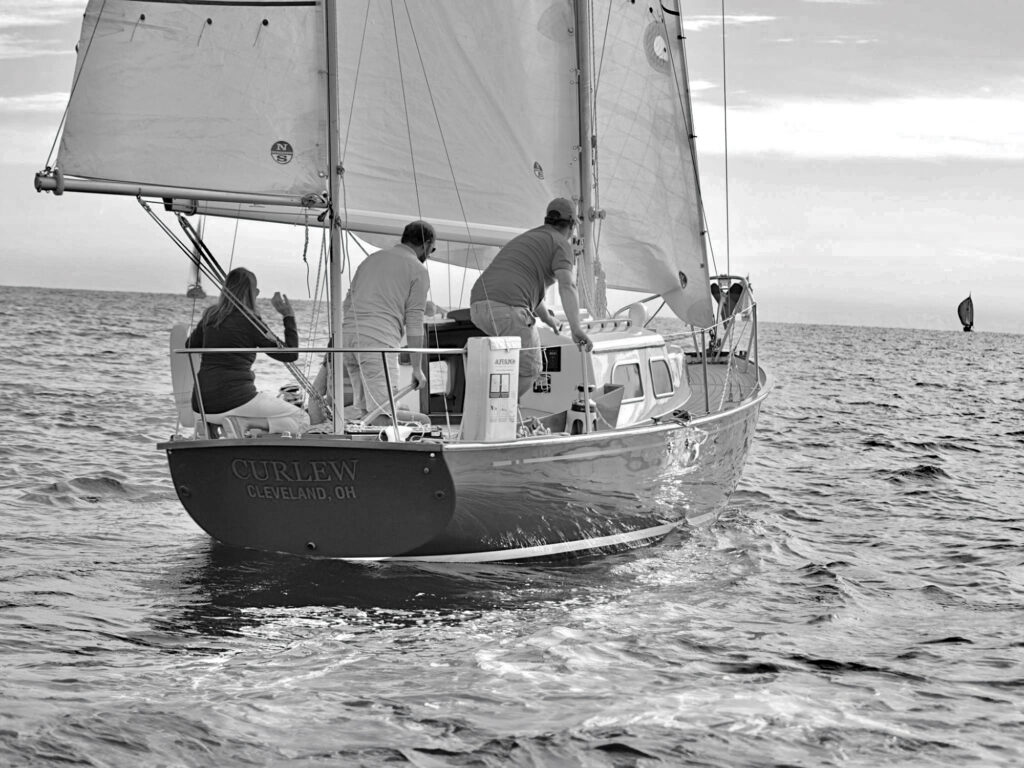
On the back lot of Tartan’s headquarters in Painesville, Ohio, the exact boat that started it all—Hull No. 1 of the sweet little Tartan 27 line, of which more than 700 were eventually built in a production run that lasted until 1979—is awaiting a complete refit. It was fun and enlightening, after sailing and reviewing Tartan’s latest offering, to consider how production-boat building and design has evolved during the past 60-plus years. The changes have been extensive.
The Tartan 27 was a collaborative effort between Douglass & McLeod Inc., an Ohio-based builder of one-design wooden dinghies such as the Thistle and the Flying Scot, and Charlie Britton, a sailor and businessman who was also reared on the shores of Lake Erie. Following his service in the US Navy, Britton sailed his 42-foot yawl from Japan to the West Indies, a rather unheard-of voyage in the late 1950s. Once home, he joined forces with D&M to commission a 27-footer for coastal cruising and club racing. Being Scotsmen, they decided to name it Tartan.

There were a lot of firsts involved here: The T27 was D&M’s first fiberglass boat, and it was one of the initial glass designs from the venerable East Coast firm of Sparkman & Stephens. The chief designer for the project was a young naval architect named Bill Shaw, who would go on to become the principal design chief at Pearson Yachts, where he designed dozens of models.
Hull No. 1 launched in 1961. With its boxy coachroof and low-aspect masthead rig, it’s hard to believe today that the T27 was considered a performance racer/cruiser at the time, but as such, it was an immediate success. It was designed to compete under the popular Cruising Club of America rating rule of the early 1960s. Like other yachts of that period, including the Pearson Triton and Hinckley Bermuda 40, it featured long overhangs and a short waterline, a narrow beam (8 feet, 9 inches), moderate displacement, a long keel, shallow draft, an aperture-mounted propeller for the Atomic 4 gas engine, a keel-hung rudder, and slack bilges. Most of the early T27s were sloops, though it was also offered as a yawl, which did well under the CCA rule.
At 7,400 pounds displacement, it was not a light boat, but when slightly cracked off, it tracked to weather like a demon. Unlike the Triton, which had a fixed keel, the T27 was a keel-centerboard boat that drew 6 feet, 4 inches when the board was lowered, and a mere 3 feet, 2 inches when raised, making it highly versatile as a pocket cruiser. The original centerboards were bronze, which must have raised some mighty maintenance issues, and is likely why it was soon switched over to steel encased in fiberglass. The ¾-inch fiberglass hull was a proverbial brick house; the deck was balsa-cored. At the time, the construction was state of the art.
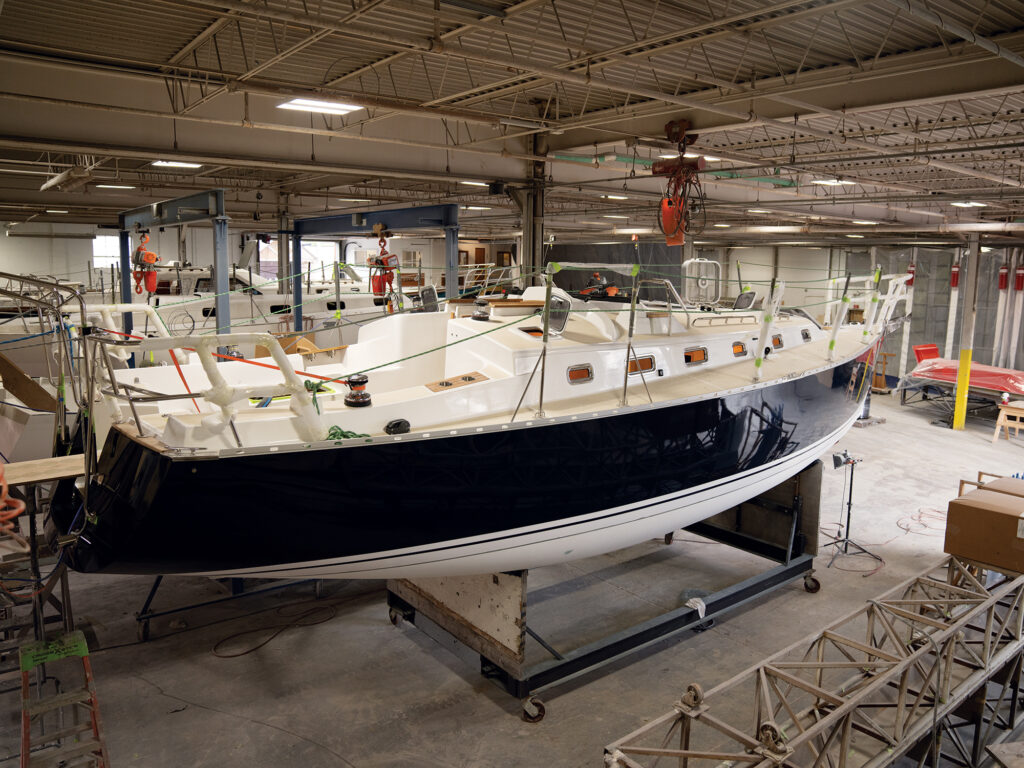
D&M followed up the T27 with a couple more venerable “classic plastic” legends, including the Ted Hood-designed Black Watch 37 (which eventually was remodeled and relaunched as the Tartan 37) and another S&S benchmark, the Tartan 34, an expanded version of the T27 that also had a centerboard. Man, for many years, I was bewitched by the 34-footer, and you can still find all of these models in harbors everywhere.
After a fire in 1971, D&M sold Britton the Tartan division, starting a whole new chapter in the company’s storied history.
As I steered the latest Tartan—a systems-rich yacht finished to an incredibly high degree—I could only wish that Britton were still around to experience the power and speed of a contemporary, long-range cruising yacht. I have no doubt that he’d be amazed, but that sweet little Tartan 27 of his was the inspiration for all that followed.







